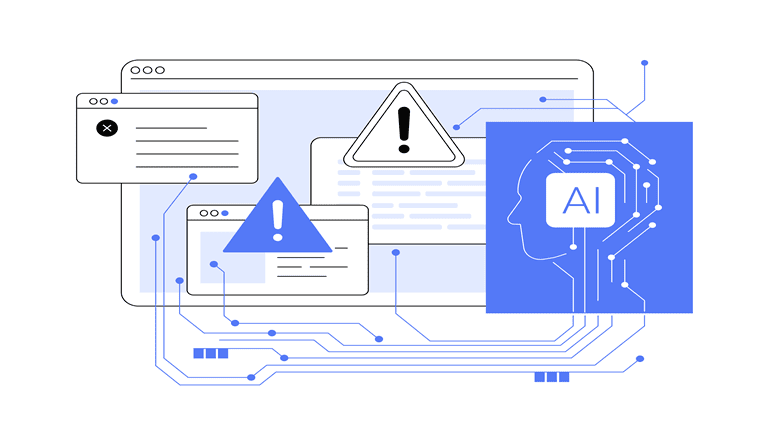Techniques for tech leaders to meet and exceed business targets
In a post-pandemic, highly globalized, and hyperconnected world, aligning IT goals with business objectives is more critical than ever.
Strategic technology planning is the cornerstone of this alignment, ensuring that your IT investments support and drive your business forward. By meticulously crafting a plan that bridges the gap between technology and business, you can foster innovation, enhance productivity, and stay ahead of the competition.
Here, we explore eight essential ways to achieve this alignment, starting with understanding your current state and defining your future aspirations.
1. As-is-to-be analysis to document your business objectives
The foundation of any strategic technology plan is a thorough “as-is-to-be” analysis. This process involves documenting your current (as-is) state and defining your desired (to-be) future state.
- Identify current capabilities: Begin by assessing your existing IT infrastructure, processes, and capabilities. What technologies are you using? What are their strengths and weaknesses?
- Define business objectives: Clearly outline your business goals. Are you looking to expand into new markets, enhance customer experience, or streamline operations?
- Gap analysis: Compare your current state to your desired future state to identify gaps. What technology solutions are missing? What processes need improvement?
Understanding where you are and where you want to be helps you create a roadmap aligning your IT initiatives with your business objectives. This alignment guarantees that every IT investment supports your broader business goals, which is essential for strategic technology planning.
2. Quantifying IT goals using SMART metrics
Once you have documented your business objectives, the next step is to translate them into specific IT goals. The SMART framework—Specific, Measurable, Achievable, Relevant, and Time-bound—helps you set clear, actionable goals.
- Specific: Define your goals with precision. Instead of a vague goal like “improve IT efficiency,” aim for “reduce server downtime by 20%.”
- Measurable: Establish metrics to track progress. Use Key Performance Indicators (KPIs) such as system uptime, response times, and user satisfaction scores.
- Achievable: Set realistic goals based on your current capabilities and resources. Ambitious yet attainable goals motivate your team and drive progress.
- Relevant: Check if your IT goals directly support your business objectives. For example, if customer satisfaction is a priority, focus on enhancing customer-facing technologies.
- Time-bound: Assign deadlines to your goals. This creates a sense of urgency and facilitates periodic progress reviews.
Setting SMART IT goals enables you to measure progress, identify areas for improvement, and ensure that your IT initiatives run in tandem with your business strategy.
3. Forecasting and business intelligence to anticipate risks
Anticipating risks and preparing for future challenges is crucial to strategic technology planning. Leveraging forecasting and business intelligence tools can help you avoid potential issues and make informed decisions.
- Data analysis: Use BI tools to analyze historical data and identify trends. This can help you predict future challenges and opportunities.
- Risk management: Develop a risk management plan that includes identifying potential risks, assessing their impact, and devising mitigation strategies.
- Scenario planning: Create different scenarios based on varying assumptions about future conditions. This helps you prepare for various possibilities and ensures you are not caught off guard.
- Continuous monitoring: Implement systems to track key metrics and alert you to potential issues before they become critical.
Using forecasting and BI, you can make data-driven decisions that minimize risks and maximize opportunities, aligning your IT and business objectives.
4. Setting up communication processes between IT and business stakeholders
Effective communication between IT and business stakeholders is essential for aligning IT goals with business objectives. Establishing clear and consistent communication processes can bridge the gap between these two groups and foster mutual understanding and collaboration.
- Regular meetings: Schedule regular meetings between IT and business leaders to discuss progress, challenges, and opportunities. This fosters transparency and keeps everyone on the same page.
- Collaborative tools: To facilitate information sharing and collaboration, use collaborative tools such as project management software, shared dashboards, and communication platforms.
- Joint planning sessions: Conduct joint planning sessions where IT and business stakeholders work together to set priorities and develop strategies. As a result, IT initiatives are aligned with business needs right from the outset.
- Feedback loops: Establish feedback loops to gather input from IT and business teams. This helps identify issues early and allows for continuous improvement.
Robust communication processes ensure that your IT strategy is aligned with your business goals and that both teams work together seamlessly towards common objectives, again a must-have for strategic technology planning.
5. Key performance indicators that correlate IT activities with business outcomes
KPIs are indispensable if you want to measure the success of IT initiatives and their impact on business outcomes. By selecting the right KPIs, you can understand the relationships between IT activities and business performance – here’s how:
- Operational efficiency: Measure system uptime, incident response times, and IT service delivery speed.
- Customer satisfaction: Track user satisfaction scores, customer retention rates, and the number of support tickets resolved.
- Financial impact: Monitor cost savings from IT investments, revenue growth attributed to new technology deployments, and return on investment.
- Innovation metrics: Evaluate the number of new products or features launched, the speed of development cycles, and the adoption rate of new technologies.
Selecting and tracking the right KPIs provides valuable insights into how IT activities contribute to achieving business goals and where adjustments may be needed.
6. Near-term, mid-term, and long-term technology roadmap that syncs with the business plan
A well-defined technology roadmap is crucial for aligning IT initiatives with business objectives over different time horizons. This roadmap should be segmented into near-term, mid-term, and long-term plans.
- Near-term (1-2 years): Focus on immediate improvements and quick wins that support current business needs. This might include upgrading existing systems, enhancing cybersecurity, or deploying new software tools.
- Mid-term (2-5 years): Plan for larger projects that require more time and resources. These could include major infrastructure upgrades, integrating advanced analytics tools, or implementing new business applications.
- Long-term (5+ years): Set the vision for transformative initiatives that align with long-term business goals. This might involve adopting emerging technologies like artificial intelligence, blockchain, or large-scale digital transformation projects.
This lets you strategically phase out IT investments to support ongoing business growth and innovation.
7. Digital innovation models that factor in risk and compliance
Embracing digital innovation is essential for staying competitive – but it must be done with an eye on risk and compliance. Implementing innovation models that consider these factors nurtures sustainable and secure growth.
- Risk assessment: Regularly conduct risk assessments to identify potential threats and vulnerabilities associated with new technologies.
- Compliance management: Stay up to date with industry regulations and compliance requirements. Implement robust compliance management processes to strengthen all IT activities and meet legal and regulatory standards.
- Agile innovation: Adopt agile methodologies that allow for iterative development and quick adjustments. This approach helps you respond promptly to new risks and compliance changes.
- Secure development practices: Incorporate security best practices into the development lifecycle to mitigate risks associated with new technology deployments.
Factoring in risk and compliance in your digital innovation efforts allows you to innovate safely and effectively without compromising security or regulatory requirements.
8. Managing change and workforce buy-in at every level
Successful technology initiatives require more than technical implementation; they need organizational buy-in and effective change management. This calls for:
- Stakeholder engagement: Involve key stakeholders from the beginning to consider their needs and address their concerns. This fosters a sense of ownership and support.
- Training and support: Provide comprehensive training and support to help employees adapt to new technologies and processes. This reduces resistance and enhances productivity.
- Change champions: Identify and empower change champions within the organization who can advocate for the new initiatives and help drive adoption.
- Clear communication: Communicate transparently and consistently about the changes, their benefits, and how they align with business goals.
Through strategic technology planning, you ensure digital programs are embraced and successfully integrated into the business.
Final Thought
When you and your IT teams work closely with business leadership, your technological investments aren’t merely a supporting act — but actively driving business success.
However, the path to alignment isn’t without its challenges. Differing priorities between IT and business units, resistance to change, and the constant pace of technological advancements can create obstacles. To navigate these challenges, you must commit to continuous learning and adaptability. Foster a culture where IT and business teams share a unified vision and a commitment to long-term goals.
Leveraging strategic technology planning can turn potential challenges into opportunities. Implement robust communication channels, establish clear KPIs, and maintain a flexible technology roadmap that aligns with your business plan.







